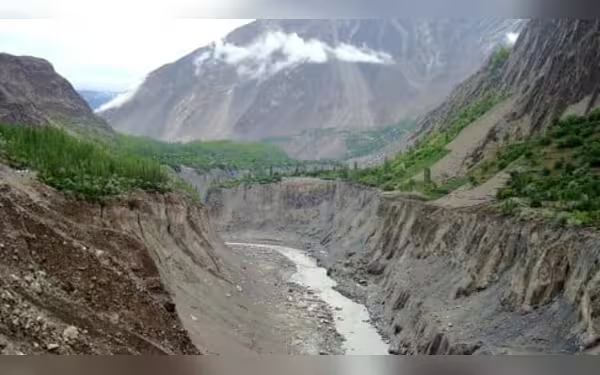Saturday, November 16, 2024 08:36 PM
Climate Crisis in Gilgit-Baltistan: CPEC's Role in Environmental Sustainability
- Gilgit-Baltistan faces severe environmental challenges.
- CPEC can integrate sustainable development projects.
- Local community involvement is crucial for success.
 Image Credits: tribune.com.pk
Image Credits: tribune.com.pkExplore how CPEC can address the climate crisis and environmental challenges in Gilgit-Baltistan through sustainable development initiatives.
The climate crisis is a pressing issue that affects many regions around the world, and Gilgit-Baltistan is no exception. Nestled in the northern part of Pakistan, this region is known for its stunning landscapes and unique biodiversity. However, due to its fragile ecosystem, Gilgit-Baltistan is facing serious environmental challenges. These challenges include natural disasters, glacial lake outburst floods (GLOFs), extreme weather conditions, declining food production, biodiversity loss, land degradation, pollution, and water shortages. The situation is alarming and requires immediate attention.
One of the key initiatives that could help address these environmental issues is the China-Pakistan Economic Corridor (CPEC). CPEC is a collection of infrastructure projects aimed at enhancing connectivity and economic development in Pakistan. While the primary focus of CPEC has been on economic growth, it is crucial to incorporate disaster mitigation and sustainable development projects specifically for Gilgit-Baltistan. By doing so, we can significantly reduce the environmental threats that the region faces.
Implementing sustainable practices within CPEC can lead to a healthier ecosystem. For instance, projects that focus on reforestation, water conservation, and renewable energy can help combat the adverse effects of climate change. Additionally, disaster preparedness programs can equip local communities with the knowledge and tools they need to respond effectively to natural disasters. This proactive approach not only protects the environment but also ensures the safety and well-being of the people living in the region.
Moreover, the involvement of local communities in these projects is essential. When people are engaged in the decision-making process, they are more likely to support and sustain these initiatives. Education and awareness campaigns can empower residents to take action in preserving their environment. By fostering a sense of ownership, we can create a more resilient Gilgit-Baltistan.
The environmental challenges facing Gilgit-Baltistan are significant, but they are not insurmountable. By integrating disaster mitigation and sustainable development projects into CPEC, we can pave the way for a brighter future for this beautiful region. It is imperative that we act now to protect the environment and ensure the well-being of the communities that call Gilgit-Baltistan home. The time for change is now, and with collective effort, we can make a difference.













